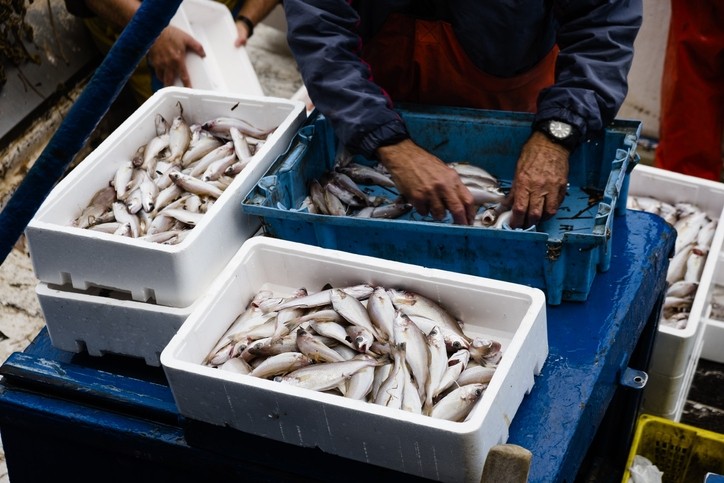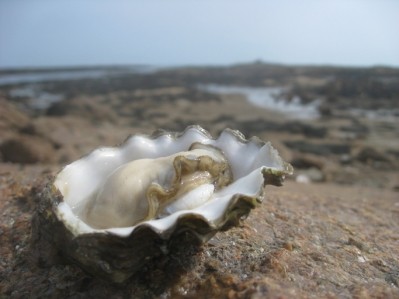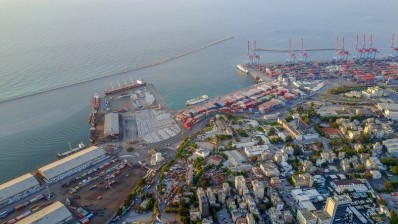Heavy metal contamination: ‘Serious and remarkable’ concentration of arsenic, lead and cadmium in Turkish fish

These findings were significant because heavy metals not only destroys the ecological aquasystem, but also endangers human health.
As a country surrounded by four seas, Turkish people consume about 6kg of fish per year (2018 data), although this was below the average consumption of 24kg in Europe.
Recently, Turkey has been urging its population to eat more fish.
Bekir Pakdemirli, Turkey’s Minister of Agriculture and Forestry commented that fish consumption had plateaued in the past two decades: “We see an increase in production and exports, but consumption plateaued while red meat and chicken consumption is on the rise. Certainly, all sources of protein should be consumed in a balanced way. I call all citizens to eat more fish to stay healthy,”
He added: “Fish is the most important source of protein, and our government actively endorses its consumption. It should be a component of the cuisine not only in coastal cities and towns but in landlocked parts of our country as well.”
Published in Hindawi’s Journal of Food Quality, researchers from Pamukkale University in Turkey conducted this study hoping to bring attention to regulations for chemical contaminants in foods, especially for arsenic, manganese, nickel, copper and zinc which have no maximum limits set at the EU level.
They wrote: “We observed serious and remarkable arsenic, lead, and cadmium concentrations in the muscle meat of fish samples.”
Currently, within the Commission Regulation (EC) No. 1881/2006, only the maximum levels for mercury, lead, cadmium, and tin are established for foodstuffs including fish meat.
Researchers collected fish samples from fishermen, who caught fish from the Aegean, Marmara and Black Sea waters.
Four fish species were analysed, Pomatomus saltatrix, Dicentrarchus labrax, Mugil cephalus, and Sparus aurata.
The inductively coupled plasma-mass spectrometer (ICP-MS) was used to analyse heavy metal concentration for arsenic, manganese, mercury, silver, cadmium, nickel, zinc, copper and lead in fish meat.
Arsenic, lead and cadmium
The highest arsenic concentration was found to be highest in Pomatomus saltatrix at 1.18 μg/g.
A previous study by Tuzen et al., reported the amount of arsenic in fish muscle meat from the Black Sea region of Turkey were in the range of 0.11 to 0.32 μg/g in 2009.
Researchers pointed out that there had been a significant increase in the amount of arsenic in the last decade in Turkey. “Increasing of arsenic amount is alarming and should be controlled immediately.”
Arsenic in high amounts can cause skin cancer, circulatory disorder, heart failure, and chronic poisoning.
However, the maximum level of arsenic has not been determined yet by the European Commission (EC No. 78/2005) nor the Turkish Food Codex (TFC), hence researchers called for a limit to be set.
For lead, the concentration in muscle tissues of fish samples varied between 0.10 to 2.38 μg/g.
In the Commission Regulations No. 1881/ 2006, the maximum level of lead was established as 0.3 μg/g for fish muscle meat. In this study, the amount of lead concentration was over the maximum level set by EC and TFC.
Researchers pointed out: “The high amount of lead must be taken under control because there is no possibility of being expelled from the body since the half-life is 20 years.”
Cadmium, another harmful heavy metal linked to lung disease, prostate cancer, and central nervous system damage, was found in extremely high concentrations in this study.
The Mugil cephalus samples contained 5.40 μg/g, while the other three species ranged from 0.13 to 1.50 μg/g.
Cadmium is a result of industrial waste contamination and researchers explained that the Mugil cephalus species thrive in dirty and turbid waters, unlike the other species, which suggest its higher cadmium levels.
The maximum limit for cadmium was set at 0.05 μg/g for both EC and TFC.
Similar to arsenic, researchers reported an increase in cadmium concentration in fish now, compared to previous studies which ranged from 0.02 to 0.47 μg/g.
“When we compared our results with the other results, increasing concentration of cadmium should be taken into serious consideration.”
Copper, mercury, zinc
For copper, the maximum concentration allowed in fish meat was set at 20 μg/g (TFC), 30 μg/g (FAO) and 20 μg/g (WHO).
In this study, copper concentration in muscle meat of fish samples were below under the maximum limit.
Similarly, the mercury concentration at 0.13 μg/g was below the maximum limit of 0.5 μg/g by the EC.
In terms of zinc, the maximum levels of zinc in fish samples was set at 50 μg/g (TCF), 30 μg/g (FAO), and 50 μg/g (MAFF).
The highest concentration of zinc was analyzed as 80.29 μg/g in this study.
Manganese, nickel, silver
For manganese, the highest concentrations were observed in the muscle meat of Pomatomus saltatrix (7.00 μg/g).
In previous studies, manganese concentration ranged from 0.10 to 9.10 μg/g in similar waters.
Manganese have been associated to tremors and mental disorders. Recent research reported that children who consumed water with high manganese content had reduced memory and cognitive abilities. Despite these toxic effects of manganese, there are no reports of maximum limits set by FAO or TFC.
Nickel is another toxic heavy metal with no upper limit established. Nickel is absorbed by the respiratory tract and associated to reduced lung function and lung cancer.
The highest nickel concentration was observed in the muscle meat of Dicentrarchus labrax (11.25 μg/g).
For silver, researchers did not observe any signs in the fish samples. Similarly, there is also no maximum limit set.
Silver is an element that cannot be easily removed from the human body and is constantly stored in the body. Prolonged exposure to silver can lead to an irreversible blue-gray discolouration of the skin, known as argyria.
“The results show an indication of the significant health risks associated with the consumption of these contaminated fish in the Aegean and Marmara seas. In the TFC and in the 2013/39/EU directive, some heavy metals that do not have the maximum allowable concentration limits should be urgently indicated,” researchers concluded.
They called for a maximum concentration limit for arsenic, manganese, nickel, copper and zinc to be established in the future.
Source: Journal of Food Quality
https://doi.org/10.1155/2020/8101532
“Determination of Heavy Metals and Pesticides in Different Types of Fish Samples Collected from Four Different Locations of Aegean and Marmara Sea”
Authors: Tufan Topal and Canan Onac













